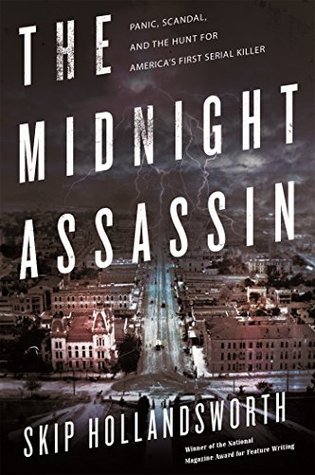More on this book
Community
Kindle Notes & Highlights
Read between
December 14 - December 17, 2020
When Sam Houston regained the presidency of the republic in 1841, he tried to relocate the capital back to Houston. A group of his supporters came to Austin in the dead of night to take back the government’s archives. But one of the town’s more devoted female loyalists, an innkeeper named Angelina Eberly, fired a six-pound cannon at the interlopers. Other gun-wielding Austinites recovered the archives and returned them to the General Land Office. Barely, Austin was saved.
One young man who had moved to Austin in 1884—William Sydney Porter, a wry, mustachioed North Carolina native who had dreams of being a writer—was so fascinated by what he saw that he sometimes slipped out of Harrell’s Cigar Store, where he worked, just to wander the streets. A couple of decades later, after the young Porter had moved to New York, changed his name to O. Henry, and become the most popular American short story writer of the late nineteenth century, literary scholars would study his fiction, wondering just how much of it was based on what he had experienced during his Austin
...more
World’s Industrial and Cotton Centennial Exposition in New Orleans,
The centerpiece of the exposition was the massive U.S. Government & State Exhibits Hall, thirty-three acres in size—at the time, the largest roofed structure in the world—and illuminated with 5,000 electric lights.
Ireland’s staff had rented nearly half an acre on the main floor of the U.S. Government & State Exhibits Hall for the “Texas Department.” No other state had come close to securing that much space.
And just to make sure visitors got the message, there was a marble globe in the center of the exhibition that showed Texas to be bigger in size than the United States and all the countries of Europe combined. (The phrase “Everything is bigger in Texas,” which would become the state’s most popular motto, probably was first uttered in New Orleans in April 1885.)
The party lasted into the night, but when everyone left the building, it still looked as if it was the middle of the day. Throughout the exposition’s grounds were 125-foot-high towers that held giant, newly invented electric “arc lamps,” each of which emitted “36,000 candlepower.” They created so much light that the exposition’s visitors literally could see blades of grass on the lawn. The Austin visitors were impressed, but for many of them, the lamps appeared to be more like a pointless curiosity than a helpful invention. Why, they asked, would anyone want to go to such expense to light up a
...more
The Daily Statesman’s story noted that “clear-headed, conservative men” were huddling on Congress Avenue’s street corners to discuss the attacks on the city’s servant women.
Some of the men theorized that there must be some sort of black gang—“a band of colored fiends,” one man said—that was behind the assaults and the killings. According to one rumor circulating up and down the Avenue, the gang worked for a black labor union that had been trying to recruit the city’s servant women to join and demand higher wages—fifteen dollars a month—from their white employers. The gang supposedly had been hired to attack those women who wouldn’t sign up.
And then there were a few men who had come up with an even more astonishing theory. They had concluded that some sort of mystical “killing mania” was sweeping over Austin’s black neighborhoods. The way they saw it, the murder of Mollie Smith had inflamed the bloodthirsty instincts of other young black men, leading them to commit similar murders of those black women they didn’t like.
Chenneville and his officers did the only thing they knew to do—they chased down more black men and arrested them for various infractions—vagrancy, disturbing the peace, public intoxication—hoping that one of them, during his uncomfortable stay in the calaboose, would confess that he knew something about the murders.
One black woman in Austin who was too old to move was an eighty-year-old former slave known fondly around town as Aunt Tempy.
After Albert Carrington’s loss to a white man in the aldermen’s race in 1885, during the height of the murders, it would not be until 1971 that a black man was again elected to the city council.


